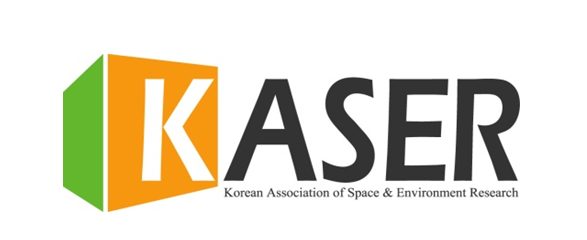ISSN : 1225-6706
논문 상세
- 2024 (34권)
- 2023 (33권)
- 2022 (32권)
- 2021 (31권)
- 2020 (30권)
- 2019 (29권)
- 2018 (28권)
- 2017 (27권)
- 2016 (26권)
- 2015 (25권)
- 2014 (24권)
- 2013 (23권)
- 2012 (22권)
- 2011 (21권)
- 2010 (33호)
- 2009 (31호)
- 2008 (29호)
- 2007 (27호)
- 2006 (26호)
- 2005 (23호)
- 2004 (21호)
- 2003 (19호)
- 2002 (17호)
- 2001 (15호)
- 2000 (13권)
- 1999 (11권)
- 1998 (10권)
- 1997 (8권)
- 1996 (7권)
- 1995 (5권)
- 1994 (4권)
- 1993 (3권)
- 1992 (2권)
- 1991 (1권)
Eurasian Crossroads Conflicting Spheres of Influence in the Republic of Georgia
Abstract
This paper examines the development of the Republic of Georgia through thelens of the NATO Membership Action Plan (MAP), namely its political andeconomic reforms, military development and territorial and border integrity. Georgia is attempting to realign with Western Europe and extract itself from theshadow of its former Soviet master. It sees NATO membership as its mostimportant strategic goal and its safest bet for integrating into the internationalcommunity. Despite improvements in its political, social and militarydevelopment, Georgia’s border disputes, territorial instability, and tensionsbetween Russia and Western Europe have left in doubt Georgia’s chances atentering NATO and holding onto control of its own destiny.
- keywords
참고문헌
Allison, R. 2008. “Russia resurgent? Moscow’s campaign to ‘coerce Georgia to peace’.”International Affairs, 84(6), pp. 1145-1171.
Allison, R. 2009. “The Russian case for military intervention in Georgia: international law, norms and political calculation.” European Security, 18(2), pp. 173-200.
Arbuthnot, J. 2008. “The Bucharest Summit and the Future of NATO.” The RUSI Journal, 153: 3, pp. 40-44.
Artman, V. M. 2013. “Documenting Territory: Passportification, Territory, and Exception in Abkazia and South Ossetia.” Geopolitics, 18, pp. 682-704.
Asmus, R. D. 2010. A Little War That Shook The World Georgia, Russia, and the Future of the West. New York, USA, Palgrave and Macmillan.
Georgia, M. o. D. o. 2010. “NATIONAL MILITARY STRATEGY OF GEORGIA.” from http://gfsis.org/media/download/GSAC/resources/NMS.pdf.
Hendrickson, T. L. B. a. R. C. 2009. “Georgian Membership in NATO: Policy Implications of the Bucharest Summit.” Journal of Slavic Military Studies, 22, pp. 20-30.
Janashia, E. 2014. NATO Grants Georgia a “Substantial Package”. Field Reports, Central Asia-Caucasus Institute and Silk Road Studies Program Joint Center.
Jones, S. F. 2012. “Reflections on the Rose Revolution.” European Security, 21(1), pp. 5 15.
Kabachnik, P. 2012. “Wounds that won’t heal: cartographic anxieties and the quest for territorial integrity in Georgia.” Central Asian Survey, 31(1), pp. 45-60.
Kriz, Z. and Z. Shevchuk. 2011. “Georgian readiness for NATO membership after Russian-Georgian armed conflict.” Communist and Post-Communist Studies, 44(1), pp. 89-97.
Martins, V. 2010. “THE GEOPOLITICS OF ABKHAZIA’S SOVEREIGNTY.” Portugeuse Journal of International Affairs Spring/Summer, 2010, pp. 1-13.
NATO. 1999. “Membership Action Plan(MAP).” from http://www.nato.int/cps/en/natolive/official_texts_27444.htm?selectedLocale=en.
NATO. 2008. Bucharest Summit Declaration.
NATO. 2014. Wales Summit Declaration.
Nichol, J. 2013. Georgia’s October 2013 Presidential Election: Outcome and Implications Congressional Research Services.
Nielsen, C. A. 2009. “The Kosovo precedent and the rhetorical deployment of former Yugoslav analogies in the cases of Abkhazia and South Ossetia.” Southeast European and Black Sea Studies Publication details, Volume 9(1-2), pp. 171-189.
Research, G. 2008. “Putin confronts NATO at Bucharest Summit.” Retrieved April 4th, 2008, from http://www.globalresearch.ca/putin-confronts-nato-at-bucharest-summit/8558.
Roberts, W. H. G., et al. 2014. “ENSO in the Mid-Holocene according to CSM and HadCM3.” Journal of Climate, 27(3), pp. 1223-1242.
STAFF, D. 2014. Poll shows Georgian Dream winning Tbilisi mayoral race. Democracy & Freedom Watch.
Zdenek Kriz, Z. S. 2011. “Georgian Readiness for NATO Membership after Russian-Georgian armed conflict.” Communist and Post-Communist Studies, 44, pp. 89-97.
- 다운로드 수
- 조회수
- 0KCI 피인용수
- 0WOS 피인용수

